- Clone
- 16A (See other available formats)
- Regulatory Status
- RUO
- Other Names
- Mucin-1, MUC-1, Episialin, HMFG antigen, MAM6
- Isotype
- Mouse IgG1, λ
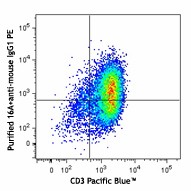
-

PHA-activated human peripheral blood lymphocytes (3 days) were stained with purified CD227 (clone 16A, top) or mouse IgG1, κ isotype control (bottom), followed by anti-mouse IgG1 PE and CD3 (clone HIT3a) Pacific Blue™. -

-

BT474 breast cancer cell line was stained with anti-human CD227, detected with anti-mouse DyLight™ 649, and nuclear counterstained with DAPI. Images were acquired with a TE300 fluorescence microscope with a 20x objective. Data provided by: Er Liu and John Nolan, La Jolla Bioengineering Institute -

IHC staining using purified anti-MUC1 antibody (clone 16A) on formalin-fixed paraffin-embedded human colon tissue. Following antigen retrieval using 1X Tris-EDTA, the tissue was incubated with 10 µg/mL of antibody overnight at 4°C, followed by incubation with 2.5 µg/mL of Alexa Fluor® 647 goat anti-mouse IgG antibody (Cat. No. 405322) for one hour at room temperature. Nuclei were counterstained with DAPI (blue) (Cat. No. 422801), and the slide was mounted with ProLong™ Gold Antifade Mountant. The images above (left: secondary only control, right: Clone 16A, 10 µg/mL) were captured with a 40X objective. Scalebar = 50 µM.
| Cat # | Size | Price | Quantity Check Availability | ||
|---|---|---|---|---|---|
| 355601 | 25 µg | $77.00 | |||
| 355602 | 100 µg | $141.00 | |||
Mucin-1 (MUC-1), cell surface associated or polymorphic epithelia mucin, is a 500-1000 kD proteoglycan expressed by activated T cells, mucosal epithelial cells, and aberrantly expressed on most breast cancers. In normal cells, CD227 is heavily glycosylated, whereas in cancerous cells, the glycosylation is incomplete and premature sialation is also observed. The protein is anchored to the apical surface of the epithelial cell and functions as a lubricant to keep the cell hydrated and to protect against pathogens. It can also function as a signaling molecule by forming a MUC-1/SOS1/GrB2 complex. MUC-1 can interact with cancer antigens such as Her2/neu.
Product Details
- Verified Reactivity
- Human
- Antibody Type
- Monoclonal
- Host Species
- Mouse
- Immunogen
- Jurkat cells transfected with MUC1
- Formulation
- Phosphate-buffered solution, pH 7.2, containing 0.09% sodium azide.
- Preparation
- The antibody was purified by affinity chromatography.
- Concentration
- 0.5 mg/mL
- Storage & Handling
- The antibody solution should be stored undiluted between 2°C and 8°C.
- Application
-
FC - Quality tested
ICC, IHC-P - Verified - Recommended Usage
-
Each lot of this antibody is quality control tested by immunofluorescent staining with flow cytometric analysis. For flow cytometric staining, the suggested use of this reagent is ≤ 1.0 µg per million cells in 100 µL volume. For immunohistochemistry on formalin-fixed paraffin-embedded tissue sections, a concentration range of 1 - 10 µg/mL is suggested. It is recommended that the reagent be titrated for optimal performance for each application.
- Application Notes
-
This clone shows stronger binding to the glycosylated compared to the non-glycosylated peptide1.
-
Application References
(PubMed link indicates BioLegend citation) -
- Song W, et al. 2012. Int. J Oncol. 41:1977. PubMed
- Product Citations
-
- RRID
-
AB_2561642 (BioLegend Cat. No. 355601)
AB_2561642 (BioLegend Cat. No. 355602)
Antigen Details
- Structure
- 500-1000 kD proteoglycan (glycosylated form)
- Distribution
-
Activated T cells, mucosal epithelial cells, aberrantly expressed in most breast cancers
- Interaction
- Complexes with SOS1 and Grb2 in RAS signaling
- Ligand/Receptor
- ICAM-1 and Her2/neu (ErbB2)
- Cell Type
- Dendritic cells, Epithelial cells, T cells
- Biology Area
- Immunology, Innate Immunity
- Molecular Family
- CD Molecules
- Antigen References
-
1. Gendler SJ. 2001. J. Mammary Gland Biol. Neoplasia. 6:339.
2. Agrawal B, et al. 1998. Cancer Res. 58:4079.
3. Rahn JJ, et al. 2004. J. Biol. Chem. 279:29386. - Gene ID
- 4582 View all products for this Gene ID
- UniProt
- View information about CD227 on UniProt.org
Other Formats
View All CD227 Reagents Request Custom Conjugation| Description | Clone | Applications |
|---|---|---|
| PE anti-human CD227 (MUC-1) | 16A | FC |
| Purified anti-human CD227 (MUC-1) | 16A | FC,ICC,IHC-P |
| PE/Cyanine7 anti-human CD227 (MUC-1) | 16A | FC |
| APC anti-human CD227 (MUC-1) | 16A | FC |
| TotalSeq™-D1250 anti-human CD227 (MUC-1) | 16A | PG |
| TotalSeq™-A1250 anti-human CD227 (MUC-1) | 16A | PG |
| TotalSeq™-B1250 anti-human CD227 (MUC-1) | 16A | PG |
| Brilliant Violet 421™ anti-human CD227 (MUC-1) | 16A | FC |
| Brilliant Violet 711™ anti-human CD227 (MUC-1) | 16A | FC |
| Brilliant Violet 785™ anti-human CD227 (MUC-1) | 16A | FC |
| TotalSeq™-C1250 anti-human CD227 (MUC-1) | 16A | PG |
| TotalSeq™-Bn1250 anti-human CD227 (MUC-1) | 16A | SB |
Compare Data Across All Formats
This data display is provided for general comparisons between formats.
Your actual data may vary due to variations in samples, target cells, instruments and their settings, staining conditions, and other factors.
If you need assistance with selecting the best format contact our expert technical support team.
-
PE anti-human CD227 (MUC-1)
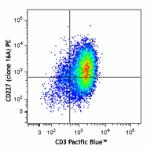
PHA-activated human peripheral blood lymphocytes (3 days) we... 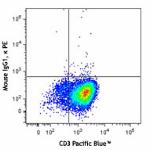
-
Purified anti-human CD227 (MUC-1)
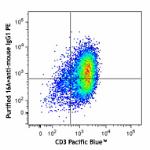
PHA-activated human peripheral blood lymphocytes (3 days) we... 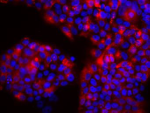
BT474 breast cancer cell line was stained with anti-human CD... 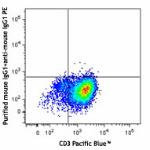

IHC staining using purified anti-MUC1 antibody (clone 16A) o... -
PE/Cyanine7 anti-human CD227 (MUC-1)

PHA-stimulated (3-days) human peripheral blood mononuclear c... -
APC anti-human CD227 (MUC-1)
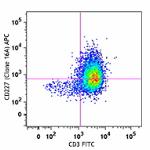
PHA-stimulated (3-days) human peripheral blood mononuclear c... 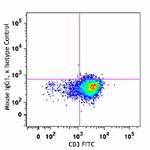
-
TotalSeq™-D1250 anti-human CD227 (MUC-1)
-
TotalSeq™-A1250 anti-human CD227 (MUC-1)
-
TotalSeq™-B1250 anti-human CD227 (MUC-1)
-
Brilliant Violet 421™ anti-human CD227 (MUC-1)

PHA-stimulated (3-days) human peripheral blood mononuclear c... -
Brilliant Violet 711™ anti-human CD227 (MUC-1)

PHA-stimulated (3-days) human peripheral blood mononuclear c... -
Brilliant Violet 785™ anti-human CD227 (MUC-1)

PHA-stimulated (3-days) human peripheral blood mononuclear c... -
TotalSeq™-C1250 anti-human CD227 (MUC-1)
-
TotalSeq™-Bn1250 anti-human CD227 (MUC-1)
